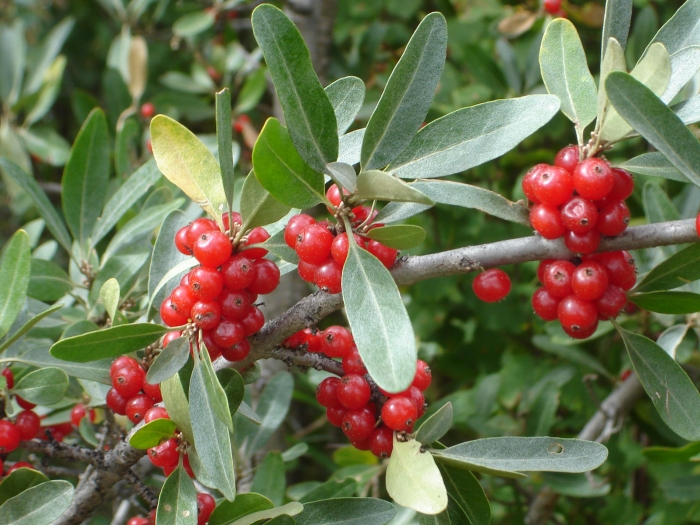Silver Buffaloberry
(Shepherdia argentea)
Silver Buffaloberry (Shepherdia argentea)
/
/

SriMesh
CC BY-SA 3.0



















































Estimated Native Range
Summary
Silver Buffaloberry is valued for its drought tolerance and ability to thrive in poor soils, making it a suitable choice for challenging sites. It is often used for wildlife habitat restoration, windbreaks, and erosion control. The berries are edible and can be used in preserves and jellies. In cultivation, it prefers full sun to part shade and requires well-drained soils. While it is adaptable to various soil types, it performs best in alkaline soils. Silver Buffaloberry is dioecious, meaning that male and female flowers are on separate plants, so both sexes must be present for fruit production.CC BY-SA 4.0
Plant Description
- Plant Type: Tree, Shrub
- Height: 10-15 feet
- Width: 8-12 feet
- Growth Rate: Rapid
- Flower Color: N/A
- Flowering Season: Spring
- Leaf Retention: Deciduous
Growth Requirements
- Sun: Full Sun, Part Shade
- Water: Medium
- Drainage: Fast, Medium
Common Uses
Bank Stabilization, Bee Garden, Bird Garden, Butterfly Garden, Deer Resistant, Drought Tolerant, Edible*Disclaimer: Easyscape's listed plant edibility is for informational use. Always verify the safety and proper identification of any plant before consumption., Erosion Control, Fire Resistant, Low Maintenance, Rabbit Resistant, Salt Tolerant, Street Planting
Natural Habitat
native to the streambanks, floodplains, and dry slopes of the western and central North America
Other Names
Common Names: Buffalo Shepherdia, Silverberry, Thorny Buffaloberry, Buffalo-Berry, Rabbit-Berry, Bull Berry, Shépherdie Argentée, Bisonbuske
Scientific Names: , Shepherdia argentea, Lepargyrea argentea, Hippophae argentea, Elaeagnus utilis, Lepargyraea argentea,
GBIF Accepted Name: Shepherdia argentea (Pursh) Nutt.